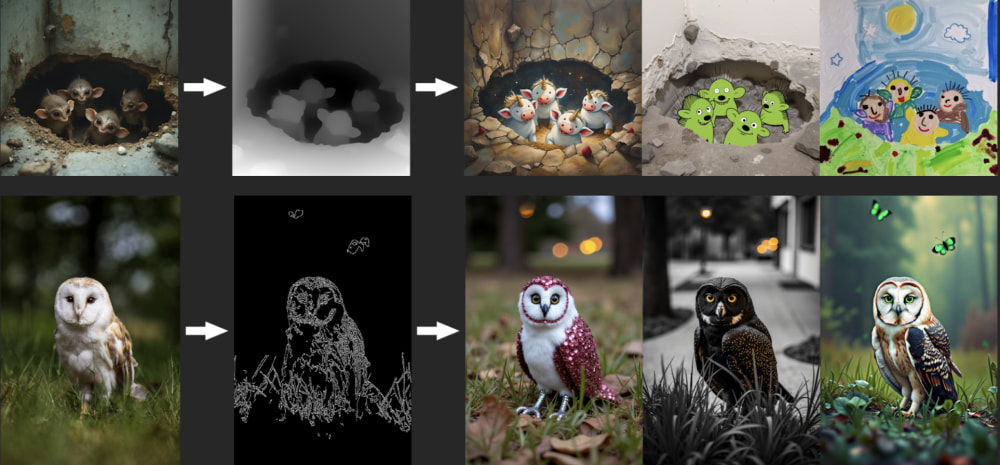Detailed Guide to Flux.1 Dev Tools Workflow

This tutorial will guide you on how to use Flux’s official ControlNet models in ComfyUI. We will cover the usage of two official control models: FLUX.1 Depth and FLUX.1 Canny.
This tutorial is based on and updated from the ComfyUI Flux examples
Model Introduction
FLUX.1 Depth [dev]
- 12 billion parameter rectified flow transformer model
- Structure guidance based on depth maps
- Uses guided distillation training for improved efficiency
- Supports personal, research, and commercial use
FLUX.1 Canny [dev]
- 12 billion parameter rectified flow transformer model
- Structure guidance based on Canny edge detection
- Also uses guided distillation training method
- Follows FLUX.1 [dev] non-commercial license
Model Version Overview
Flux ControlNet models are available in two versions: Full Model and LoRA Model.
Full Model Version
- Complete model file containing all weights
- Requires larger VRAM
- Best generation quality
LoRA Version
- Lightweight model containing only difference weights
- Requires base Flux model
- Lower VRAM usage
Preparation
1. Update ComfyUI
First, ensure your ComfyUI is updated to the latest version. If you don’t know how to update and upgrade ComfyUI, please refer to How to Update and Upgrade ComfyUI.
Note: Flux ControlNet functionality requires the latest version of ComfyUI, so please complete the update first.
2. Full Version Model Downloads
| Model Name | File Name | Installation Location | Download Link | Description |
|---|---|---|---|---|
| CLIP Model | clip_l.safetensors | ComfyUI/models/clip/ | Download | Standard CLIP Encoder |
| CLIP Model | t5xxl_fp16.safetensors | ComfyUI/models/clip/ | Download | Standard Precision Version |
| CLIP Model | t5xxl_fp8_e4m3fn.safetensors | ComfyUI/models/clip/ | Download | Low Precision Version |
| VAE Model | ae.safetensors | ComfyUI/models/vae/ | Download | VAE Encoder-Decoder |
| Flux Depth | flux1-depth-dev.safetensors | ComfyUI/models/diffusion_models/ | Download | Depth Control Model |
| Flux Canny | flux1-canny-dev.safetensors | ComfyUI/models/diffusion_models/ | Download | Edge Control Model |
3. LoRA Version Model Downloads
| Model Name | File Name | Installation Location | Download Link | Description |
|---|---|---|---|---|
| Flux Base Model | flux1-dev.safetensors | ComfyUI/models/diffusion_models/ | Download | LoRA Base Model |
| Depth LoRA | flux1-depth-dev-lora.safetensors | ComfyUI/models/loras/ | Download | Depth Control LoRA |
| Canny LoRA | flux1-canny-dev-lora.safetensors | ComfyUI/models/loras/ | Download | Edge Control LoRA |
4. Workflow File Downloads
5. System Requirements
- VRAM Requirements: Recommended minimum 16GB VRAM
- If VRAM is limited, you can use fp8 version models to reduce VRAM usage
Reference Resources
- FLUX.1 Depth Dev Official Page
- FLUX.1 Canny Dev Official Page
- ComfyUI Flux Examples
- blackforestlabs Blog